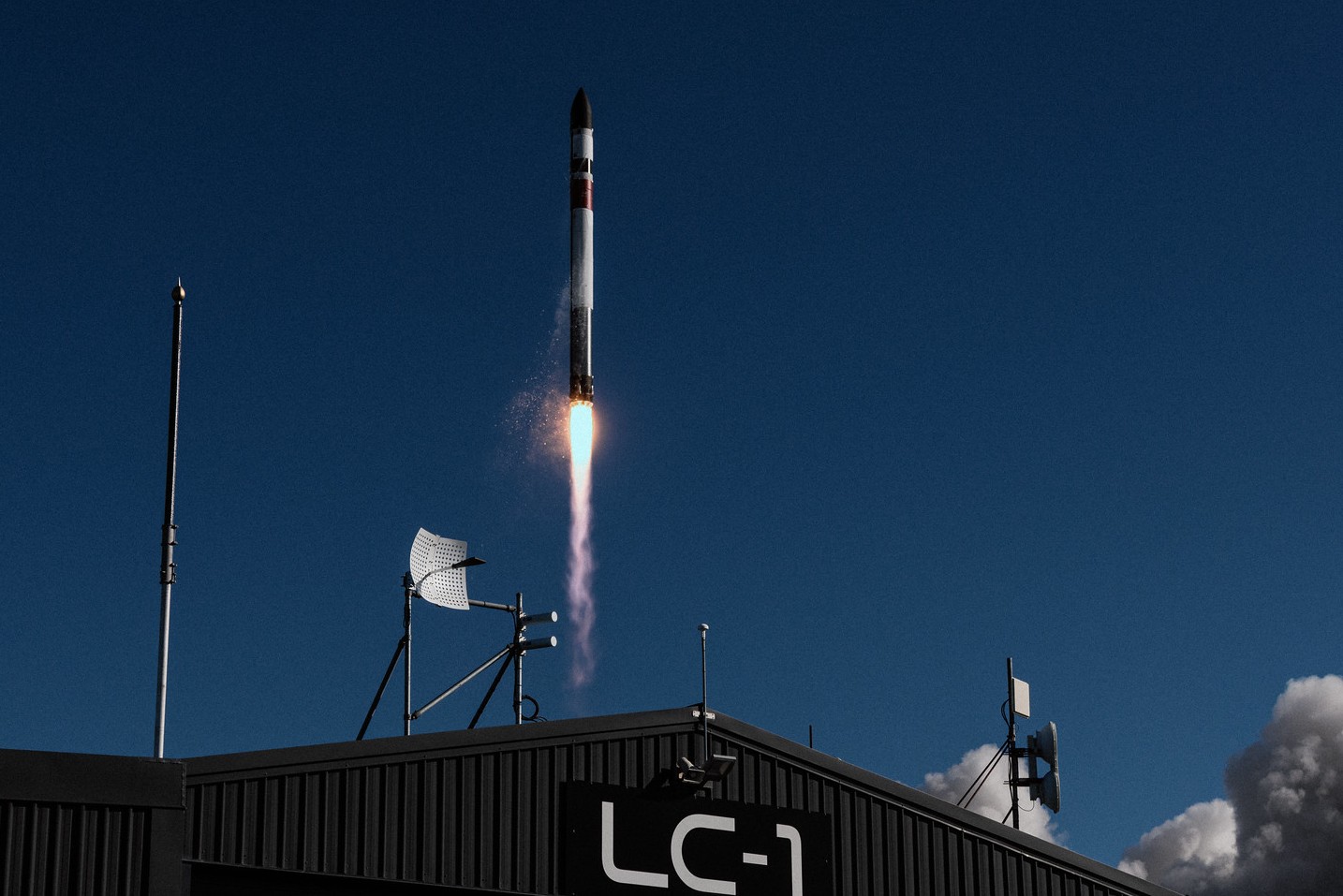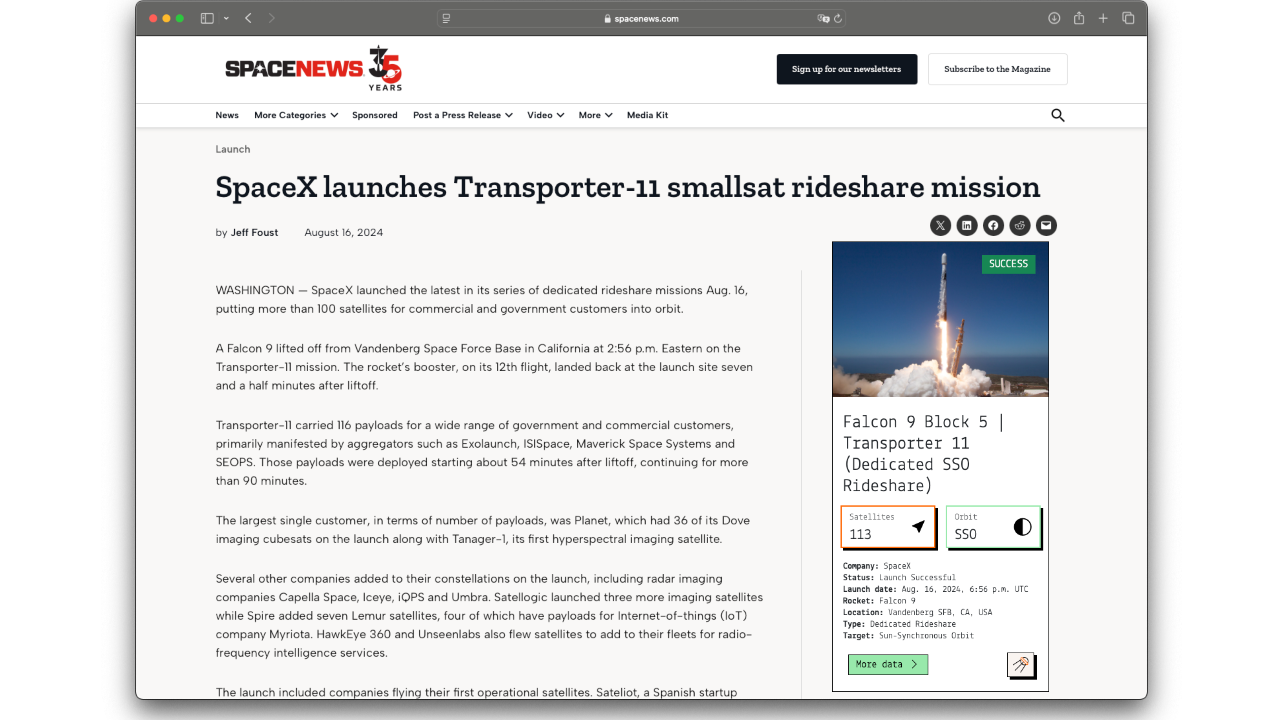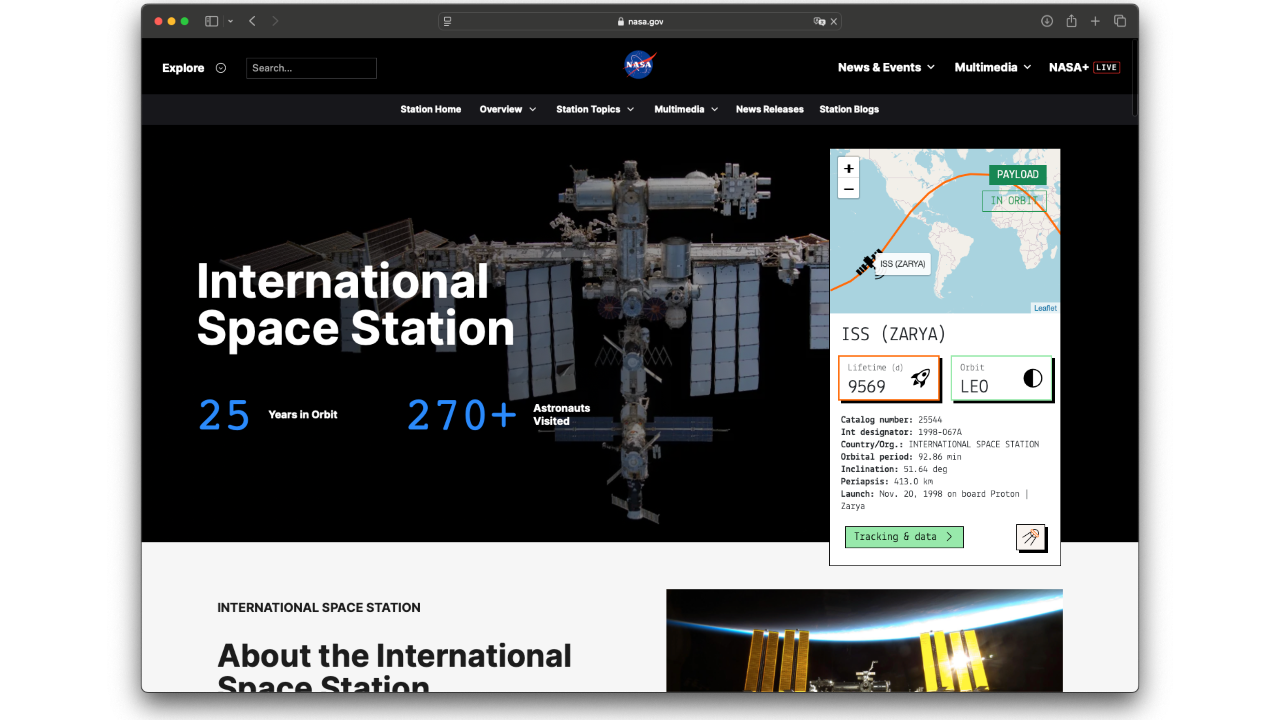Key statistics
Satellite LEMUR 2 DEVERILL-M-T at a glance.
Uptime
880
Days in orbit
Revolutions
≈ 15.3
Per day
Orbit
SSO
Sun Synchronous Orbit
Inclination
99.5
Latest
Satellite identification and parameters
Extended collection of information and parameters for LEMUR 2 DEVERILL-M-T.
Object identification
Identified? True
Debris? False
Object name: LEMUR 2 DEVERILL-M-T
International designator: 2023-100F
Object number (NORAD): 57391
Object ID (CCSDS): 57391
Country: UNITED STATES OF AMERICA (US)
Current information (Y/N): Y
RCS size: SMALL
Orbital parameters
Period: 94.138 minutes
Inclination: 99.454 deg
SMA: 6854.933 km
Apoapsis: 481.643 km
Periapsis: 471.952 km
RAAN: 327.5986 deg
Eccentricy: 0.00070688
Argument of periapsis: 320.6329 deg
Mean anomaly: 39.4391 deg
Mean motion: 15.29670834 rev/day
Mean motion (dot): 0.00034061 rev/day2
B* drag term: 0.0011831855 1/REarth
Two-line elements (TLE)
Creation date: Dec. 12, 2025, 10:14 a.m.
Reference frame: TEME
Reference center: EARTH
Epoch: Dec. 12, 2025, 4:50 a.m. UTC
TLE line 0: 0 LEMUR 2 DEVERILL-M-T
TLE line 1: 1 57391U 23100F 25346.20178475 .00034061 00000-0 11832-2 0 9996
TLE line 2: 2 57391 99.4540 327.5986 0007069 320.6329 39.4391 15.29670834132566
Live tracking on map
Real-time ground track for satellite LEMUR 2 DEVERILL-M-T.
In-orbit conjunctions
There are no conjunctions computed for LEMUR 2 DEVERILL-M-T, at the moment. Check back to stay up to date, as we update our databases every day.
Go to all conjunctionsAssociated space launch
The "Baby Come Back" mission includes NASA's Starling project, which consists of four CubeSats designed to test technologies for future swarm missions. Telesat contributes the LEO 3 demonstration satellite, ensuring continuity for customers and ecosystem vendor testing. Additionally, two 3U satellites carrying GNSS-RO payloads from SpinGlobal will replenish their constellation of over 100 multipurpose satellites.
LEMUR 2 DEVERILL-M-T was lifted into orbit during the mission ‘Electron | Baby Come Back (Rideshare)’, on board a Electron space rocket.
The launch took place on July 18, 2023, 1:27 a.m. from Rocket Lab Launch Complex 1B.
For more information about the launch, click the button.

Electron | Baby Come Back (Rideshare)
Agency: N/A
Status: Launch Successful
Launch date: July 18, 2023, 1:27 a.m. UTC
Rocket: Electron
Launch pad: Rocket Lab Launch Complex 1B
Location: Rocket Lab Launch Complex 1, Mahia Peninsula, New Zealand
...
Latest news about this satellite

Making multiple breakthroughs in spacecraft swarms
Each year, SpaceNews selects the people, programs and technologies that have most influenced the direction of the space industry in the past year. Started in 2017, our annual celebration recognizes outsized achievements in a business in which no ambition ...

NASA boosts science objectives for Starling swarm
NASA is expanding testing of distributed autonomy for its first satellite swarm, Starling. The post NASA boosts science objectives for Starling swarm appeared first on SpaceNews.

Launch Roundup: Rocket Lab conducts Electron reuse attempt, SpaceX flies two Starlink v2 missions
The week of July 16 through July 23 saw four more launches take place around the world, potentially increasing the orbital launch count to 108 so far in 2023. This included Rocket Lab’s launch of the “Baby Come Back” mission (which featured a first stage ...
Newsletter sign-up
Weekly statistics, charts and insights to help you stay on top of the space industry.




